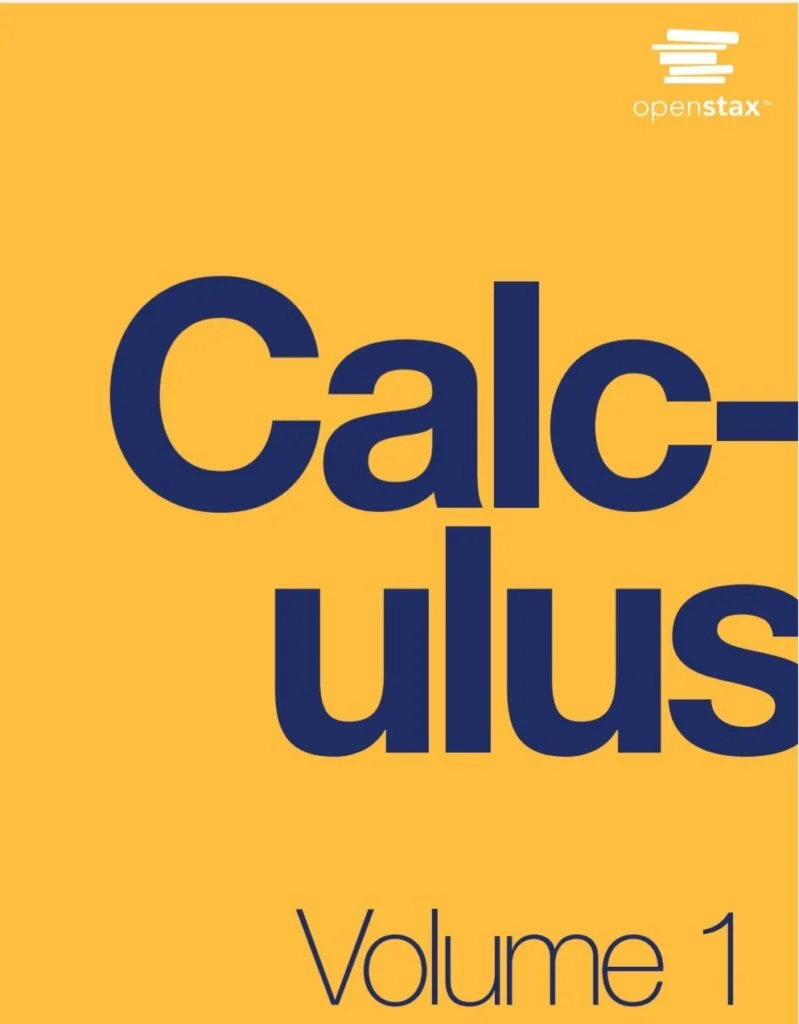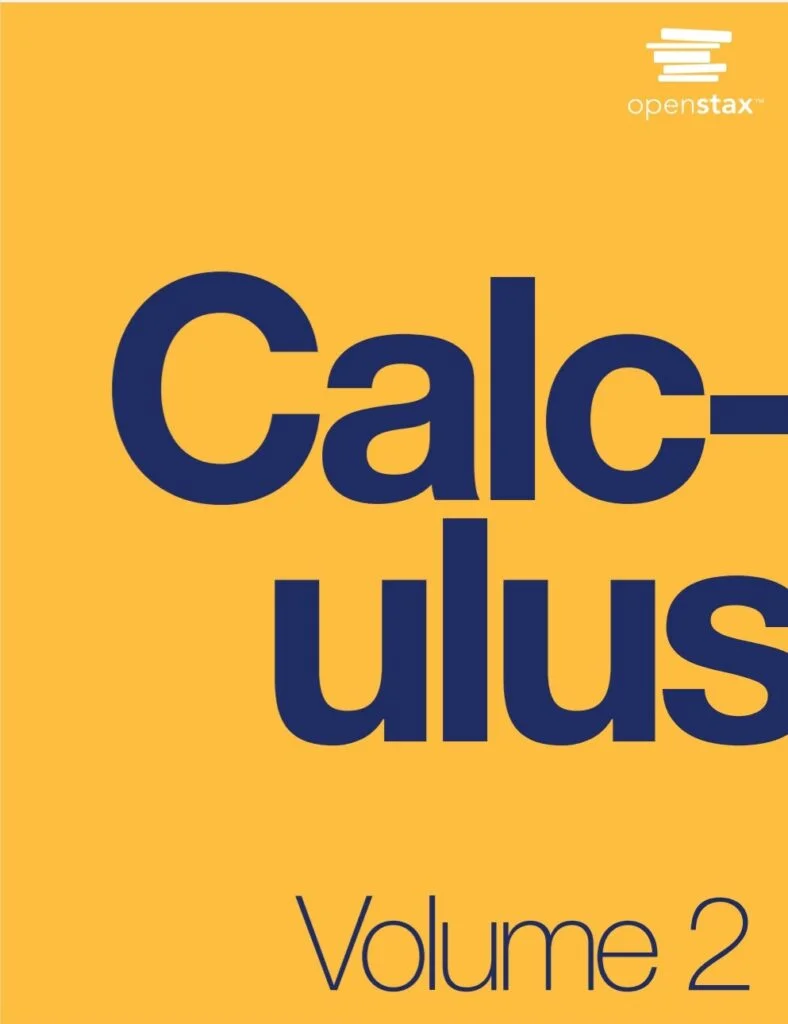Calculus is designed for the typical two- or three-semester general calculus course, incorporating innovative features to enhance student learning. The book guides students through the core concepts of calculus and helps them understand how those concepts apply to their lives and the world around them. Due to the comprehensive nature of the material, we are offering the book in three volumes for flexibility and efficiency
Calculus Volume 1
. Volume 1 covers functions, limits, derivatives, and integration.

Calculus Volume 2
Volume 2 covers integration, differential equations, sequences and series, and parametric equations and polar coordinates.

Calculus Volume 3
Volume 3 covers parametric equations and polar coordinates, vectors, functions of several variables, multiple integration, and second-order differential equations.

CHAPTERWISE INDEX
Calculus Volume 1
Chapter 1 Functions and Graphs
- Introduction
- 1.1 Review of Functions
- 1.2 Basic Classes of Functions
- 1.3 Trigonometric Functions
- 1.4 Inverse Functions
- 1.5 Exponential and Logarithmic Functions
- Key Terms
- Key Equations
- Key Concepts
- Chapter Review Exercises
Chapter 2 Limits
- Introduction
- 2.1 A Preview of Calculus
- 2.2 The Limit of a Function
- 2.3 The Limit Laws
- 2.4 Continuity
- 2.5 The Precise Definition of a Limit
- Key Terms
- Key Equations
- Key Concepts
- Chapter Review Exercises
Chapter 3 Derivatives
- Introduction
- 3.1 Defining the Derivative
- 3.2 The Derivative as a Function
- 3.3 Differentiation Rules
- 3.4 Derivatives as Rates of Change
- 3.5 Derivatives of Trigonometric Functions
- 3.6 The Chain Rule
- 3.7 Derivatives of Inverse Functions
- 3.8 Implicit Differentiation
- 3.9 Derivatives of Exponential and Logarithmic Functions
- Key Terms
- Key Equations
- Key Concepts
- Chapter Review Exercises
Chapter 4 Applications of Derivatives
- Introduction
- 4.1 Related Rates
- 4.2 Linear Approximations and Differentials
- 4.3 Maxima and Minima
- 4.4 The Mean Value Theorem
- 4.5 Derivatives and the Shape of a Graph
- 4.6 Limits at Infinity and Asymptotes
- 4.7 Applied Optimization Problems
- 4.8 L’Hôpital’s Rule
- 4.9 Newton’s Method
- 4.10 Antiderivatives
- Key Terms
- Key Equations
- Key Concepts
- Chapter Review Exercises
Chapter 5 Integration
- Introduction
- 5.1 Approximating Areas
- 5.2 The Definite Integral
- 5.3 The Fundamental Theorem of Calculus
- 5.4 Integration Formulas and the Net Change Theorem
- 5.5 Substitution
- 5.6 Integrals Involving Exponential and Logarithmic Functions
- 5.7 Integrals Resulting in Inverse Trigonometric Functions
- Key Terms
- Key Equations
- Key Concepts
- Chapter Review Exercises
Chapter 6 Applications of Integration
- Introduction
- 6.1 Areas between Curves
- 6.2 Determining Volumes by Slicing
- 6.3 Volumes of Revolution: Cylindrical Shells
- 6.4 Arc Length of a Curve and Surface Area
- 6.5 Physical Applications
- 6.6 Moments and Centers of Mass
- 6.7 Integrals, Exponential Functions, and Logarithms
- 6.8 Exponential Growth and Decay
- 6.9 Calculus of the Hyperbolic Functions
- Key Terms
- Key Equations
- Key Concepts
- Chapter Review Exercises
Appendix A Table of IntegralsAppendix B Table of DerivativesAppendix C Review of Pre-Calculus
Answer Key
Calculus Volume 2
Chapter 1 Integration
- Introduction
- 1.1 Approximating Areas
- 1.2 The Definite Integral
- 1.3 The Fundamental Theorem of Calculus
- 1.4 Integration Formulas and the Net Change Theorem
- 1.5 Substitution
- 1.6 Integrals Involving Exponential and Logarithmic Functions
- 1.7 Integrals Resulting in Inverse Trigonometric Functions
- Key Terms
- Key Equations
- Key Concepts
- Chapter Review Exercises
Chapter 2 Applications of Integration
- Introduction
- 2.1 Areas between Curves
- 2.2 Determining Volumes by Slicing
- 2.3 Volumes of Revolution: Cylindrical Shells
- 2.4 Arc Length of a Curve and Surface Area
- 2.5 Physical Applications
- 2.6 Moments and Centers of Mass
- 2.7 Integrals, Exponential Functions, and Logarithms
- 2.8 Exponential Growth and Decay
- 2.9 Calculus of the Hyperbolic Functions
- Key Terms
- Key Equations
- Key Concepts
- Chapter Review Exercises
Chapter 3 Techniques of Integration
- Introduction
- 3.1 Integration by Parts
- 3.2 Trigonometric Integrals
- 3.3 Trigonometric Substitution
- 3.4 Partial Fractions
- 3.5 Other Strategies for Integration
- 3.6 Numerical Integration
- 3.7 Improper Integrals
- Key Terms
- Key Equations
- Key Concepts
- Chapter Review Exercises
Chapter 4 Introduction to Differential Equations
- Introduction
- 4.1 Basics of Differential Equations
- 4.2 Direction Fields and Numerical Methods
- 4.3 Separable Equations
- 4.4 The Logistic Equation
- 4.5 First-order Linear Equations
- Key Terms
- Key Equations
- Key Concepts
- Chapter Review Exercises
Chapter 5 Sequences and Series
- Introduction
- 5.1 Sequences
- 5.2 Infinite Series
- 5.3 The Divergence and Integral Tests
- 5.4 Comparison Tests
- 5.5 Alternating Series
- 5.6 Ratio and Root Tests
- Key Terms
- Key Equations
- Key Concepts
- Chapter Review Exercises
Chapter 6 Power Series
- Introduction
- 6.1 Power Series and Functions
- 6.2 Properties of Power Series
- 6.3 Taylor and Maclaurin Series
- 6.4 Working with Taylor Series
- Key Terms
- Key Equations
- Key Concepts
- Chapter Review Exercises
Chapter 7 Parametric Equations and Polar Coordinates
- Introduction
- 7.1 Parametric Equations
- 7.2 Calculus of Parametric Curves
- 7.3 Polar Coordinates
- 7.4 Area and Arc Length in Polar Coordinates
- 7.5 Conic Sections
- Key Terms
- Key Equations
- Key Concepts
- Chapter Review Exercises
Appendix A Table of IntegralsAppendix B Table of DerivativesAppendix C Review of Pre-Calculus
Answer Key
Calculus Volume 3
Chapter 1 Parametric Equations and Polar Coordinates
- Introduction
- 1.1 Parametric Equations
- 1.2 Calculus of Parametric Curves
- 1.3 Polar Coordinates
- 1.4 Area and Arc Length in Polar Coordinates
- 1.5 Conic Sections
- Key Terms
- Key Equations
- Key Concepts
- Chapter Review Exercises
Chapter 2 Vectors in Space
- Introduction
- 2.1 Vectors in the Plane
- 2.2 Vectors in Three Dimensions
- 2.3 The Dot Product
- 2.4 The Cross Product
- 2.5 Equations of Lines and Planes in Space
- 2.6 Quadric Surfaces
- 2.7 Cylindrical and Spherical Coordinates
- Key Terms
- Key Equations
- Key Concepts
- Chapter Review Exercises
Chapter 3 Vector-Valued Functions
- Introduction
- 3.1 Vector-Valued Functions and Space Curves
- 3.2 Calculus of Vector-Valued Functions
- 3.3 Arc Length and Curvature
- 3.4 Motion in Space
- Key Terms
- Key Equations
- Key Concepts
- Chapter Review Exercises
Chapter 4 Differentiation of Functions of Several Variables
- Introduction
- 4.1 Functions of Several Variables
- 4.2 Limits and Continuity
- 4.3 Partial Derivatives
- 4.4 Tangent Planes and Linear Approximations
- 4.5 The Chain Rule
- 4.6 Directional Derivatives and the Gradient
- 4.7 Maxima/Minima Problems
- 4.8 Lagrange Multipliers
- Key Terms
- Key Equations
- Key Concepts
- Chapter Review Exercises
Chapter 5 Multiple Integration
- Introduction
- 5.1 Double Integrals over Rectangular Regions
- 5.2 Double Integrals over General Regions
- 5.3 Double Integrals in Polar Coordinates
- 5.4 Triple Integrals
- 5.5 Triple Integrals in Cylindrical and Spherical Coordinates
- 5.6 Calculating Centers of Mass and Moments of Inertia
- 5.7 Change of Variables in Multiple Integrals
- Key Terms
- Key Equations
- Key Concepts
- Chapter Review Exercises
Chapter 6 Vector Calculus
- Introduction
- 6.1 Vector Fields
- 6.2 Line Integrals
- 6.3 Conservative Vector Fields
- 6.4 Green’s Theorem
- 6.5 Divergence and Curl
- 6.6 Surface Integrals
- 6.7 Stokes’ Theorem
- 6.8 The Divergence Theorem
- Key Terms
- Key Equations
- Key Concepts
- Chapter Review Exercises
Chapter 7 Second-Order Differential Equations
- Introduction
- 7.1 Second-Order Linear Equations
- 7.2 Nonhomogeneous Linear Equations
- 7.3 Applications
- 7.4 Series Solutions of Differential Equations
- Key Terms
- Key Equations
- Key Concepts
- Chapter Review Exercises
Appendix A Table of IntegralsAppendix B Table of DerivativesAppendix C Review of Pre-Calculus
Answer Key



